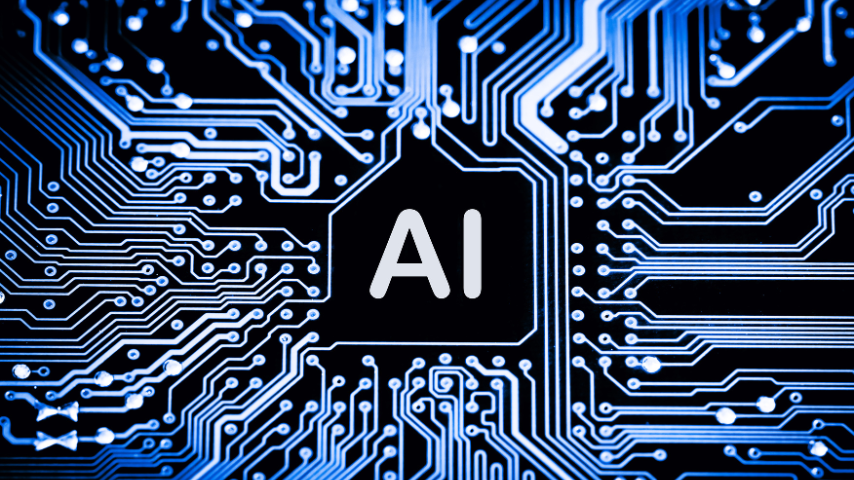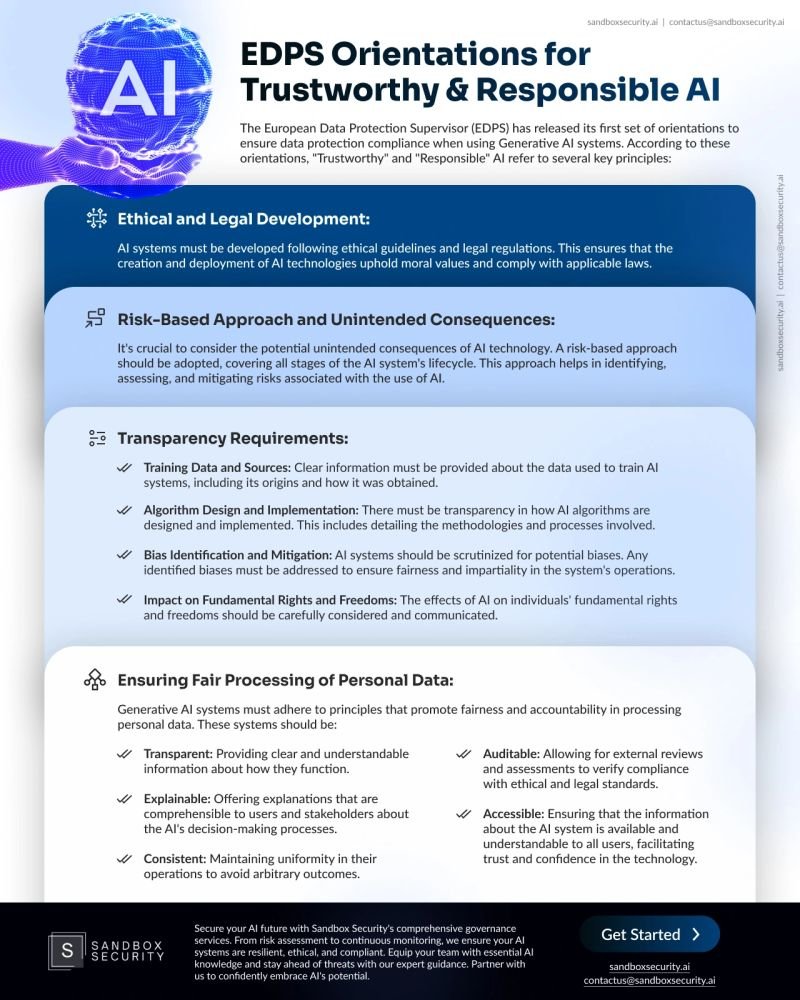13 PCI QSA Companies in Dubai (2025) Certified By PCI Security Standards Council
13 PCI QSA Companies in Dubai (2025) Certified By PCI Security Standards Council Sandbox...

In a world driven by rapid technological advancements, artificial intelligence (AI) stands out as a transformative force. However, alongside its potential benefits lie significant ethical and privacy concerns.
In response, the European Data Protection Supervisor (EDPS) has released its first set of orientations to ensure data protection compliance when using Generative AI systems.
These orientations define what constitutes “Trustworthy” and “Responsible” AI, anchored by several core principles crucial for the moral and lawful deployment of AI technologies ensuring a balance between innovation and individual rights.

The primary objective of the EDPS orientations is to foster AI systems that are transparent, accountable, and aligned with fundamental human rights. This vision is rooted in the belief that technology should serve humanity, rather than compromise our dignity or autonomy.
At its core, AI development should never occur in a vacuum devoid of ethical scrutiny and legal oversight. The EDPS emphasizes that AI systems must be developed in adherence to ethical guidelines and legal regulations. This dual adherence not only promotes moral integrity but also ensures that the deployment of AI technologies is compliant with existing laws. By prioritizing these aspects, we can foster an environment where AI advancements contribute positively to society without overstepping moral or legal boundaries.
One of the most notable attributes of AI is its capacity for unforeseen implications. Therefore, adopting a risk-based approach is indispensable. This means evaluating potential risks at every stage of the AI system’s lifecycle—from inception and deployment to post-deployment monitoring. By systematically identifying, assessing, and mitigating these risks, we can pre-emptively address unintended consequences, ensuring that AI technologies remain safe and beneficial over time.
Transparency is the cornerstone of trustworthy AI. The EDPS outlines specific areas where transparency is paramount:
3.1. Training Data and Sources: It’s essential to provide clear and accessible information about the data used to train AI systems, including its origins and methods of acquisition. This promotes accountability and helps users understand the foundation upon which AI decisions are made.
3.2. Algorithm Design and Implementation: Full disclosure of how AI algorithms are designed and implemented is required. This includes detailing the methodologies and processes involved, which aids in demystifying AI operations.
3.3. Bias Identification and Mitigation: Scrutiny for potential biases within AI systems is crucial. Once identified, these biases must be promptly addressed to guarantee that the AI operates impartially, ensuring fairness across all decision-making processes.
3.4. Impact on Fundamental Rights and Freedoms: The implications of AI on individuals’ fundamental rights and freedoms need thorough consideration. Communicating these effects transparently helps build public trust and ensures that the technology respects individual liberties.
Fair processing of personal data is another critical aspect of trustworthy AI. The EDPS outlines several principles that Generative AI systems must adhere to:
4.1. Transparent: AI systems should offer clear and understandable information about their functionalities. This openness helps in demystifying AI operations for users and stakeholders.
4.2. Explainable: AI decision-making processes should be explicated in a manner comprehensible to the average user. This facilitates understanding and fosters trust in the technology.
4.3. Consistent: To avoid arbitrary outcomes, AI systems must maintain uniformity in their operations. Consistency is vital to ensure fairness and reliability.
4.4. Auditable: Allowing external reviews and assessments of AI systems ensures that they comply with ethical and legal standards. This external validation is crucial for maintaining accountability.
4.5. Accessible: Information about the AI system should be readily available and understandable to all users. Accessibility fosters trust and confidence, making the technology more user-friendly and reliable.
While the EDPS orientations provide a strong framework, the journey towards trustworthy and responsible AI is ongoing. It requires continuous dialogue, collaboration, and adaptation to new challenges. Policymakers, technologists, and the public must work together in this endeavor.
In conclusion, the EDPS orientations for Trustworthy & Responsible AI lay the foundation for a future where AI can flourish without compromising human values. By embracing transparency, accountability, and ethical integrity, we can harness the full potential of AI while safeguarding our fundamental rights. As we navigate this path, let us remember that the true measure of progress lies not just in technological advancements, but in the preservation and enhancement of the human experience.
In conclusion, the EDPS orientations for Trustworthy & Responsible AI lay the foundation for a future where AI can flourish without compromising human values
By embracing these principles, we can navigate the complexities of AI with a focus on transparency, fairness, and accountability, ensuring that AI advancements contribute constructively to our society while safeguarding individual rights and freedoms.
As we navigate this path, let us remember that the true measure of progress lies not just in technological advancements, but in the preservation and enhancement of the human experience.
Tags :
13 PCI QSA Companies in Dubai (2025) Certified By PCI Security Standards Council Sandbox...
The Role of Encryption and Tokenization in PCI DSS Compliance Shubhi Bhargava April 12,...
Vendor Management and Third-Party Risks in PCI DSS Compliance Shubhi Bhargava April 12, 2025...